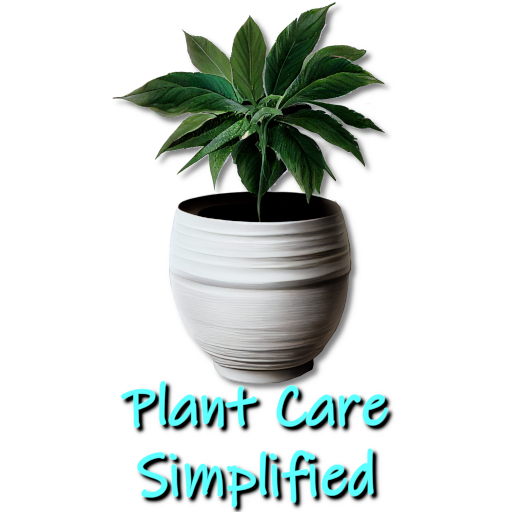How to Prepare LECA Balls for Use with Your Plants | Full Guide
Kim is passionate about helping people create beautiful, healthy indoor spaces that are filled with plants. Kim believes that plants make us happier, healthier human...
- The preparation process for LECA differs slightly between new and recycled aggregate.
- A considerable amount of clay dust accumulates on the aggregate between manufacture and when you first open the bag.
- It is essential to prepare LECA properly so that dust particles and chemical residues don't contaminate the nutrient solution.
- Whether you are using new lightweight expanded clay aggregate (LECA balls/pebbles) straight from the bag or recycling LECA from a previous planting, the clay aggregate will require preparation before it is ready for use.
Whether using new, expanded clay aggregate (LECA balls/pebbles) straight from the bag or recycling LECA from a previous planting, the clay aggregate will require preparation and cleaning before it is ready for use. There are a few differences in the preparation processes between new and reused LECA; we shall discuss how to prepare leca for each separately.
How are You Using LECA?
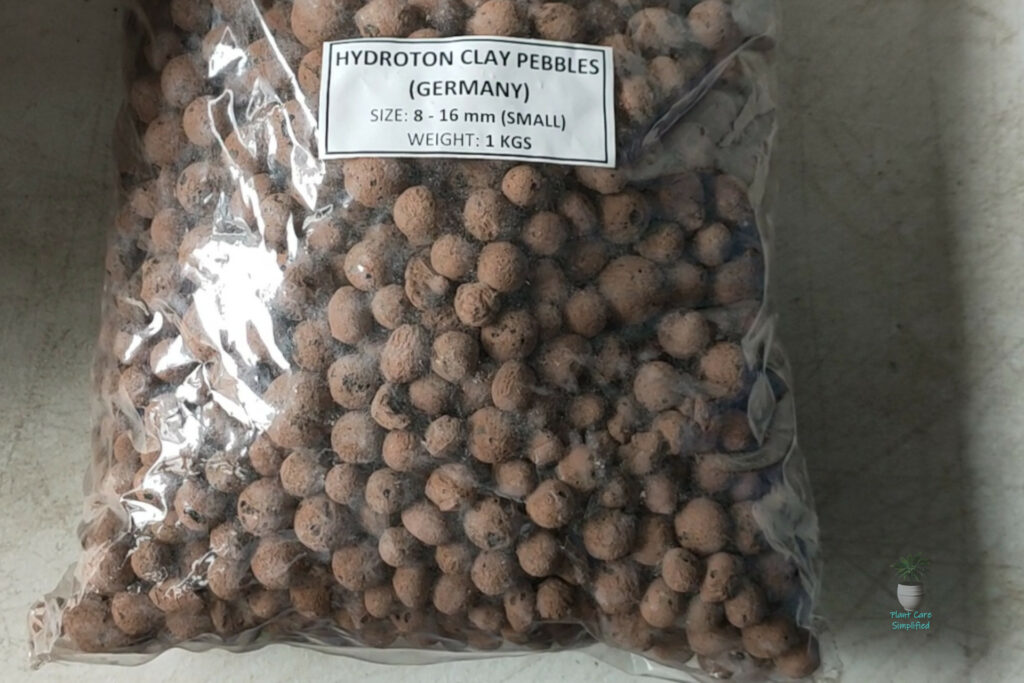
There is quite a bit of science behind the cleaning process of expandable clay aggregate. It is essential to get it right if you run a vertical farming operation or have an extensive home hydroponics system to avoid contamination of the system.
However, if you use LECA as a growing medium for single houseplants in a passive hydroponic system, you should be practical about the process.
All you want is clean material that will not contaminate your nutrient solution. In this article, you will find an easy-to-follow process that should be more than adequate for domestic houseplants.
Equipment for Cleaning
The process of cleaning the LECA balls is straightforward and requires very little in the way of equipment. But to ensure the process is as quick and smooth as possible, it is advisable to gather all the items together before you start so that you have them to hand. Organizing yourself will enable you to work through the cleaning stages quickly.
Essential equipment required to clean LECA balls:
- Two or three buckets/bowls
- a colander or cheesecloth (you can adapt a bucket for this)
- a small brush
- bicarbonate of soda (can speed up the cleaning process)
- a drying rack
- a box to store the cleaned balls
You may or may not need all of the above; much will depend on the state of the clay aggregate before you clean it.
As you will be rinsing through the LECA balls several times, you can use a colander, sieve, or cheesecloth. If you can spare a bucket/container and are likely to use LECA again, you can create a colander by adapting a bucket. Just drill a few 1/16" holes (approximately 2mm in diameter) in the bottom and around the lower 2″ of the bucket.
Additional Equipment
A TDS meter (total dissolved solids) is a helpful piece of equipment, especially if you are going to use LECA regularly. It has two functions. One, when preparing the LECA will give you a good idea of how clean the aggregate is. Second, it can help monitor the nutrient levels in the solution you use in your hydroponic or semi-hydroponic systems.
In addition to the above equipment, depending on the required level of conditioning, you might also need a gas burner or a heating element. If you recycle LECA, you will need it for cleaning and preparation before reuse.
Preparing Newly Bought LECA
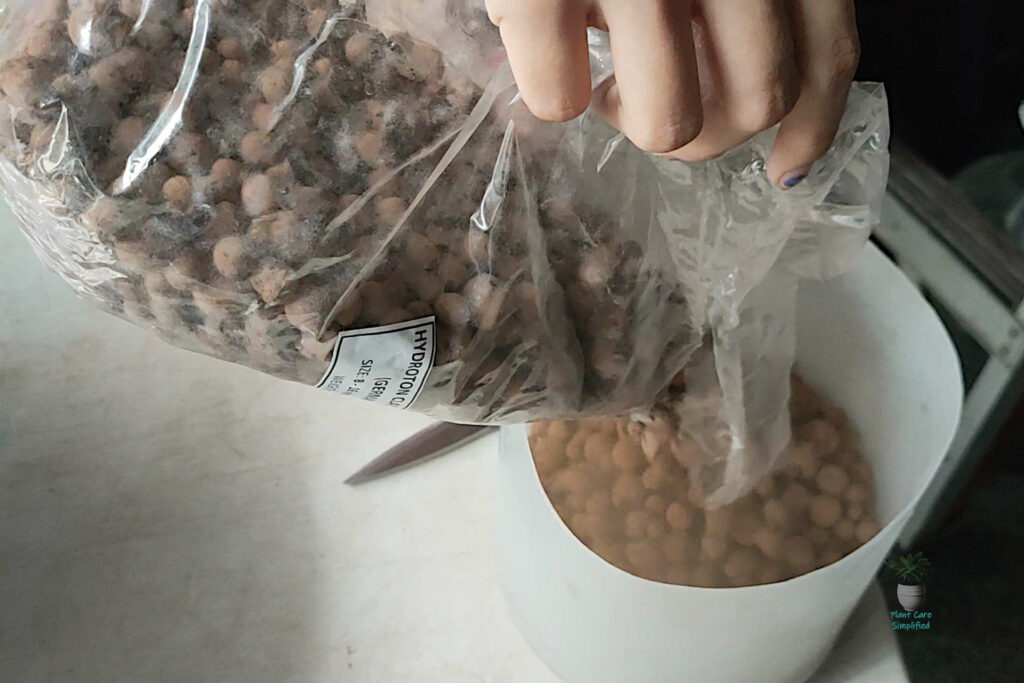
There ate two ways to approach preparing your LECA balls. For most domestic use cases, the simplified process should be good enough.
Simplified Process
This simplified process should be good enough for domestic semi-hydroponic planting (using just LECA as your growing medium). Just follow the steps below, and you should be good to go.
- Empty the bag of LECA into a container
- Wash with lukewarm tap water and rinse through a colander or cheesecloth several times until the water runs clear
- Put the washed LECA into a clean bowl and soak for 24hrs.
- Drain the water and then soak again for another 24hrs.
- Drain, and the LECA is ready to use
Detailed Guide to Preparing New LECA
Below is a more detailed process you are more likely to employ if you are involved with vertical farming or have a more extensive hydroponic system.
Step-by-Step Guide to Preparing LECA for Use
When you open a new bag of clay aggregate and pour it into a container, you will likely notice the dust that rises immediately. This clay dust has been created by friction between the balls of LECA as they jostle inside the bag.
Before using expanded clay aggregate as a growing medium, we must remove the clay dust and any loose particles on the aggregate. Lingering chemicals in the dust can easily taint your nutrient solution causing it to become contaminated.
The cleaning process is divided into two stages, washing (potentially conditioning) and soaking.
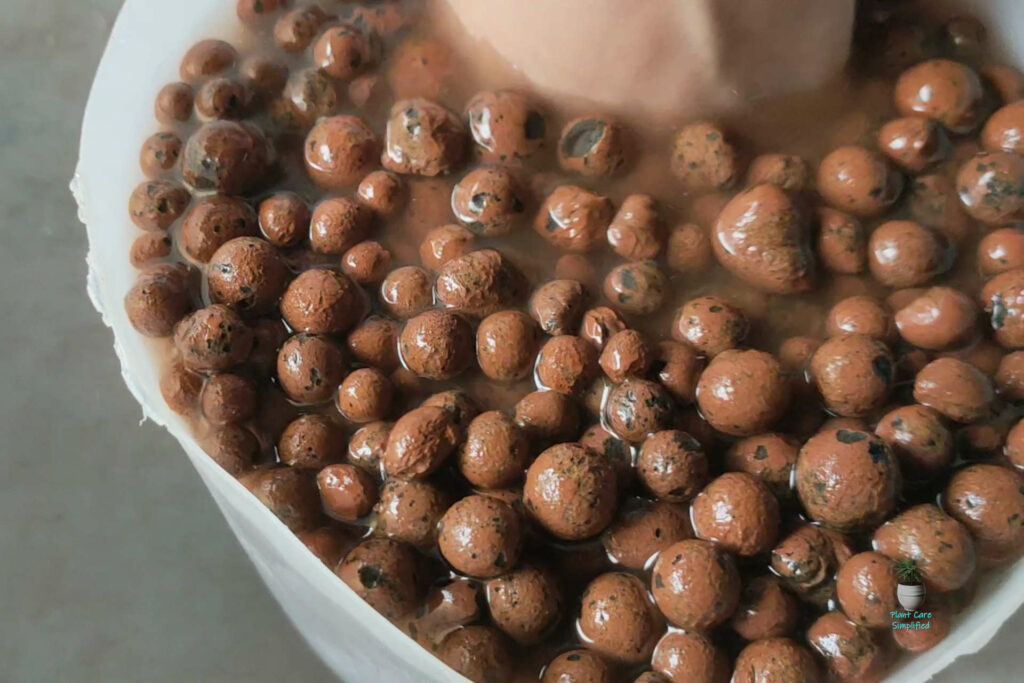
Initial Clean
- Washing the Clay Aggregate
- Arrange two clean buckets or bowls adjacent or close to one another.
- Add the LECA balls to the first container and submerge them in lukewarm water. The water will go dirty brown quickly as the dust clings to the water.
- Move them around to remove as much dirt as possible, and then pass them through a colander or cheesecloth to drain the water.
- Repeat this process several times until the water runs clear.
- Optional Processes: You can soak the aggregate in a bowl of water, with a tablespoon of bicarbonate soda added, for 15 minutes. The bicarbonate soda will ensure that the LECA balls are free from residual chemicals.
The soaking process
The second stage is the soaking process. This stage involves soaking the LECA over a more extended period to remove more dirt, which usually takes 24 to 48hrs.
You might be asking why, if the water already runs clear do we need to soak? The answer is that the appearance of the water can be deceptive. If you analyze the water from which the LECA was rinsed, you will see it is far from clean.
If you use a TDS meter, you will see that the rinsed water will likely register about 1,200 particles per million (PPM). A reading at this level is 8 to 10 times that of fresh tap water, which generally contains 125-200 PPM. The difference is primarily due to debris from the LECA.
The LECA's First Soak
- Take the aggregate out of the first bucket and place them in the second bucket, which should also be clean.
- Submerge the LECA in the second bucket with fresh lukewarm tap water.
- Leave for 24 to 48hrs
After this soak, you will want to retest the PPM level of the water. You should find that the levels have reduced to between 700-800 PPM. However, these levels are still considerably higher than fresh tap water. To reduce these levels further, you will need to repeat the process.
The LECA's Second Soak
- The LECA's Second Soak
- Take the balls out of the second bucket and place them back in the first or another bucket, which you should have thoroughly cleaned.
- Submerge the balls in this bucket with fresh tap water, or if you have distilled water, use this.
- Leave for another 24hrs.
Again, take another reading which will hopefully show levels are now around 400 PPM,
Storing Cleaned LECA
If you are going to use the LECA at a later date, you should store it carefully. Before storing, thoroughly dry the aggregate on a rack and place it in a dry, airtight box.
Note that when you come to use them, you should soak them again for 24hrs before adding them as a growing medium to your plants.
Reusing LECA
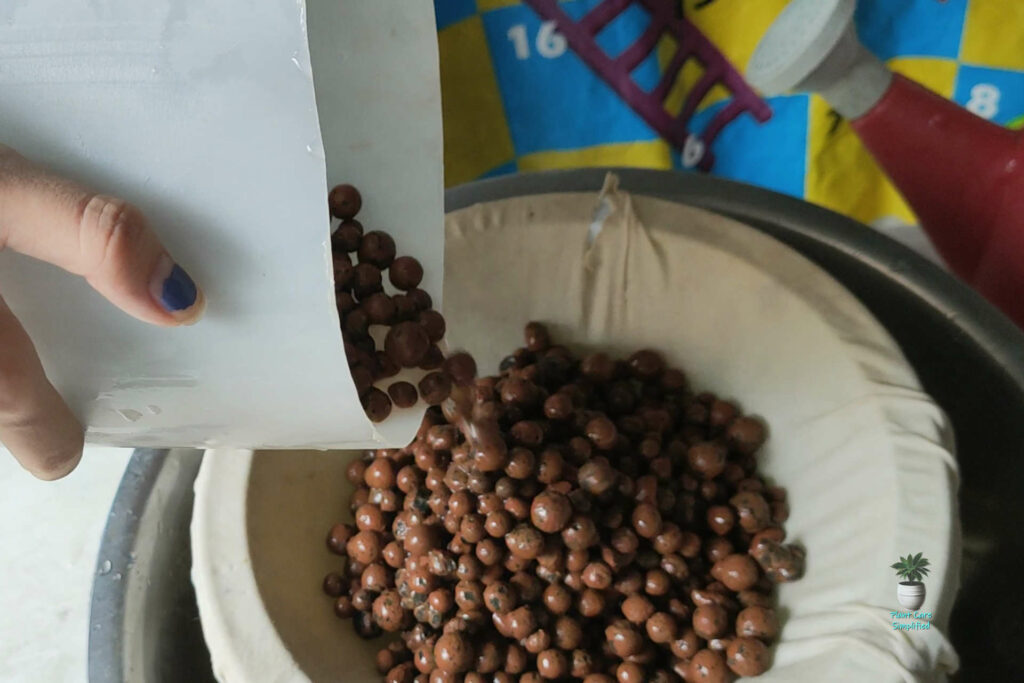
As we have discussed, one of the most significant benefits of LECA is that it can be reused indefinitely. However, it is essential to clean the balls properly, whether reusing with houseplants or repurposing (it can be used to create a humidifier), just like new LECA balls.
The obvious reasons are that they have picked up dirt and other impurities during their use. If you have used the LECA in combination with other growing media, especially dirt-based media, then this can be a particular problem.
Step-by-Step Guide to Recycling Used LECA
The procedure is, for the most part, the same as it is for the new LECA balls. However, because of the nature of roots, you might need to scrub some of the balls with a small wire brush to remove bits of the root that can sometimes adhere.
The second difference is that if recycling used clay aggregate, it is good practice to sterilize it. Two sterilization options are boiling or soaking the LECA in a hydrogen peroxide solution.
- Empty the used LECA into a container
- Wash with lukewarm tap water and rinse through a colander or cheesecloth
- Scrub clean any debris attached to the clay aggregate
- Repeat 2 and 3 until clean.
- Sterilize the LECA by adding it to a saucepan and boiling it for 10-15 minutes. Alternatively, soak it for 10-15 minutes in a 25% hydrogen peroxide solution.
- Cool and put the LECA into a clean bowl and soak for 24hrs
- Drain the water and then soak again for another 24hrs.
- Drain, and the LECA is ready to use
The Science Behind Soaking
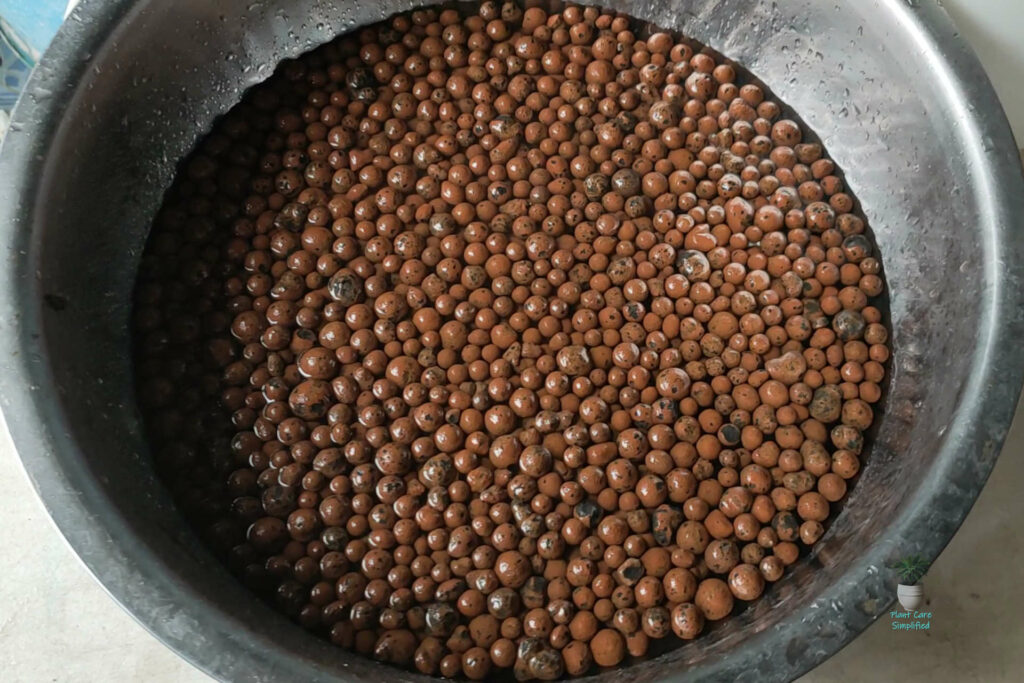
Soaking LECA is effective because of the molecular properties of water. Water molecules have positive and negatively charged ends, and these opposite charges attract to themselves.
The attraction causes the molecules to form into droplets and surface tension, and this property is called cohesion. Water also has a second property called adhesion, where it tries to stick to other elements, raindrops on glass panes being an example.
The properties of cohesion and adhesion in water can be disturbed by dissolving particles in it. The disturbance prevents the water from continuing to be magnetic, causing it to fall away, with the dissolved particles from the soaking expanded clay aggregate.
There is a limit to the number of particles the water can absorb. The Law of Chemical Equilibrium defines this limit as a ratio between the number of particles absorbed and the number of particles to absorb, hence the need to repeat the soaking process.
Kim is passionate about helping people create beautiful, healthy indoor spaces that are filled with plants. Kim believes that plants make us happier, healthier human beings, and she loves sharing her knowledge with others so they can experience the joys of plant care for themselves. <a href="https://plantcaresimplified.com/kim-marson/">Read more</a>
More Posts